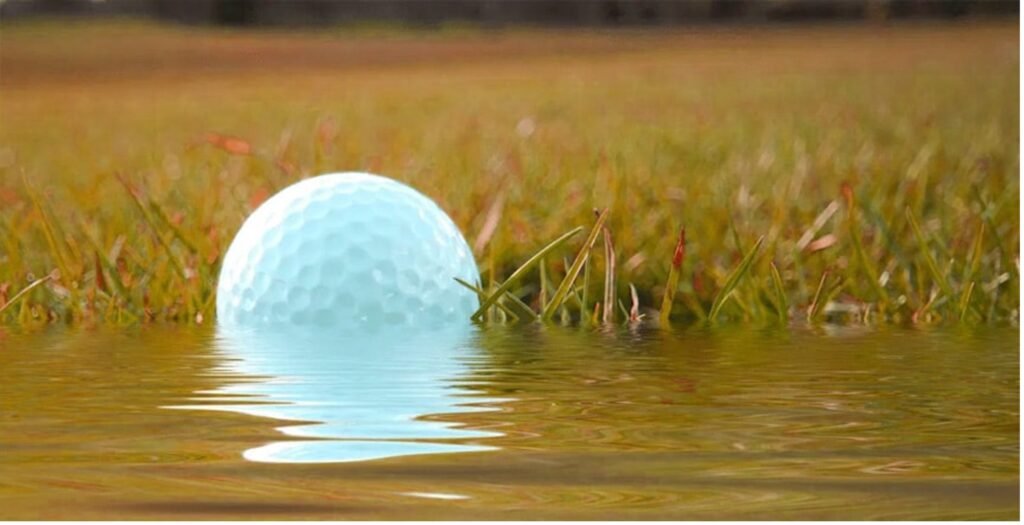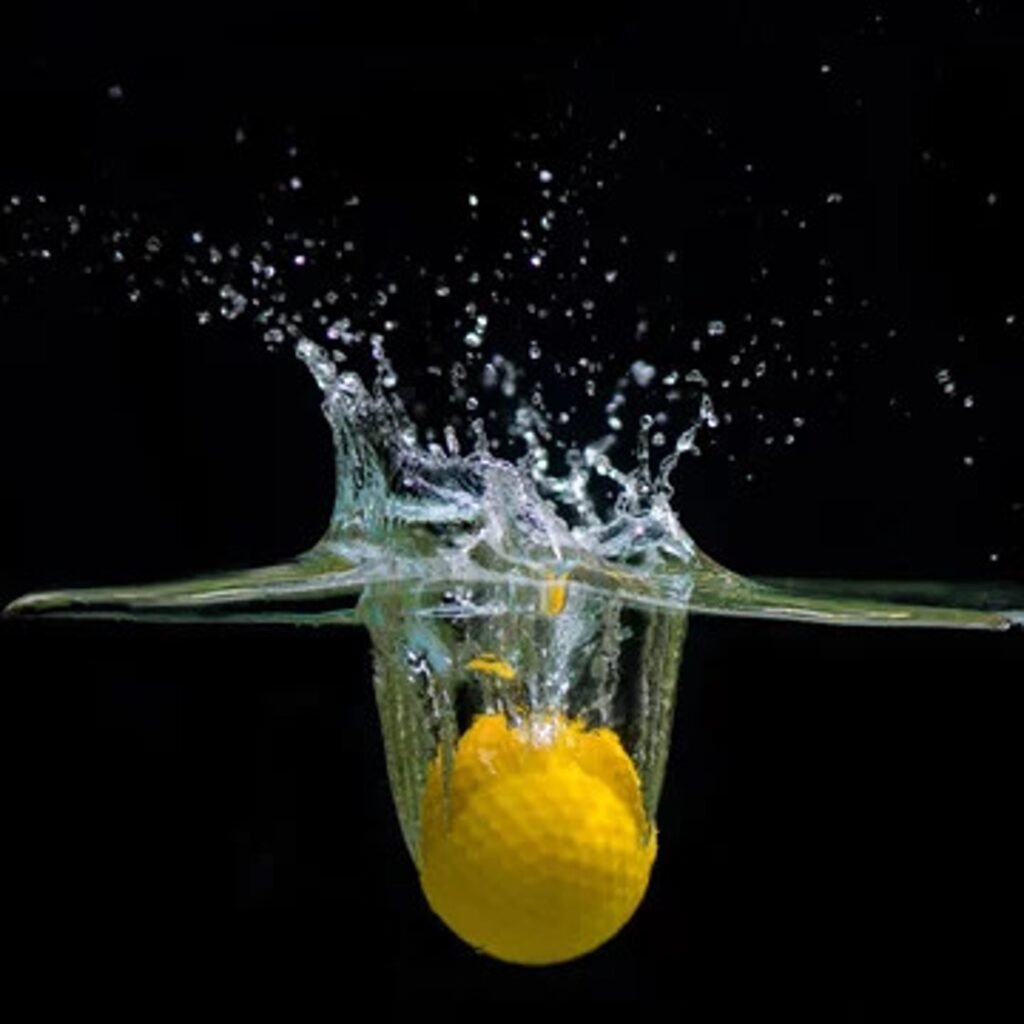Can a golfball get waterlogged

A Golfball soaked in water | @Jim Furyk
Golf is a sport with so many intricacies and details. One of these intricacies is the golf ball. The quality of these balls plays a critical role in a player’s performance on the course. The design and composition of the ball are crucial as they determine how far and accurate and how responsive the ball will be. However, a major question that has been asked time and time without number is if a golf ball can get all soaked up in water. To answer this question, this article examines the methods of manufacturing golf balls, exploring the possibility of waterlogging, and the waterlogging measures employed by manufacturers.
The composition of golf balls

Golf Balls | @Golfballplanet
Golf balls usually consist of a core made of rubber or synthetic materials surrounded by layers of materials, like rubber, plastic or urethane. The outer cover is typically constructed with a very firm material having dimple like uneven patterns on its surface to improve aerodynamics and control. The different types of golf balls such as two and three piece as well as multi balls have varying designs and constructions that offer specific performance qualities, like distance, control and feel. All these components work together to determine how well a golf ball performs on the course.
Waterproofing measures in golf ball design
Golf ball manufacturers take steps to make sure that their balls don’t absorb water and maintain their performance in conditions. They use materials, like urethane for the cover, which’s resistant to water to protect the layers and core from moisture. Additionally, they thoroughly seal the seams or joining points of the cover to reduce water entry. These measures are important because they keep the golf ball buoyant, maintain its weight and ensure it maintains aerodynamics when its wet outside. By preventing waterlogging, these waterproofing techniques help preserve the balls distance, accuracy and overall playability. Golfers can better enjoy performance with golf balls that have waterproofing in different weather conditions.
The effects of water on golf ball performance

Golfball soaked in water | @adobestock
This is a very sensitive one for golfers. The impact of water on the performance of golf balls can be quite significant as it can change the whole direction of the game. When a golf ball absorbs too much water, it becomes heavier changes and as a result, its aerodynamics and overall performance suffers. Waterlogged golf balls tend to lose distance, accuracy and responsiveness due to the added weight which affects a players ability to make decent shots. Furthermore, the feel and feedback from the ball may be compromised, affecting a golfers control and confidence on the course. To maintain peak performance levels, its best to prevent waterlogging by using waterproofed balls and avoiding exposure to water.
The effects of water on golf ball performance
This is another common occurrence golfers experience during the sport. Water can seep into golf balls in ways which can affect how they perform on the golf course with a larger impact on the player themselves.. When a golf ball gets wet, from rain or water hazards, tiny pores or imperfections in the balls cover might let water get inside. Moreover, if the golf ball is old or damaged, its seals may not be as effective at keeping water out. So, when water gets into the ball, it makes it heavier and leads to a poorer gameplay. The flight of the ball becomes rough and overall playability. To prevent this, manufacturers can take steps to make golf balls waterproof so that they can withstand various weather conditions. They can also include expiry dates for each ball they produce so the golfers can dispose it off after a certain number or period of use. It’s also important for golfers to understand how water seepage happens so they can maintain performance and keep their golf balls in shape for longer.
Comparisons between different golf ball models
When it comes to comparing models of golf balls there are factors that need to be taken into consideration. These factors include how they are manufactured, their compression level, the material used for the cover and their overall performance. Golfers often consider aspects such, as spin rate, launch angle and how they feel when choosing a ball that matches their skill level and goals on the golf course. This simple act of preparation sets apart players who truly understand their game from players. In light of this manufacturers offer a range of options tailored to needs. Some balls are designed for distance while others prioritize control and feel. Golfers are advised to try out models in order to find the one that suits their game best taking into account factors, like swing speed and personal preferences. Ultimately comparing models of golf balls empowers players to make decisions based on their unique playing requirements and preferences.
How golfers can protect their balls from water damage
To safeguard golf balls from water damage, golfers can take note of these few precautions.
- One effective approach is to keep the balls in bags or use ball covers that’re resistant to moisture.
- It’s also wise to avoid water hazards whenever possible.
- Selecting golf balls designed with water features and promptly drying any balls after playing helps maintain their performance levels.
By adopting these measures golfers can reduce the chances of water damage. Ensure that their balls retain their quality and performance during a round of golf.
Tips for maintaining optimal golf ball performance
To keep golf balls performing at their best, some basic tips are highlighted below.
- Golfers should regularly check their balls for any signs of damage.
- Replace any that’re scuffed or worn out.
- After each round it’s important to give the balls a cleaning.
- When storing them make sure to keep them in an dry place, from extreme temperatures and direct sunlight.
- Another key factor is choosing the type of ball that suits your playing style and preferences.
By incorporating these practices into your routine you can ensure that your golf balls consistently provide the distance, accuracy and responsiveness you’re looking for on the course.
Summary
To answer the question posed in the beginning of the article- Can a golfball get waterlogged? Certainly, a golf ball can indeed become waterlogged, and various factors contribute to this, such as wear, cracks, poor materials, insufficient maintenance and lots more. However, measures to avoid this have also been emphasized which includes regular checking and cleaning of the golfballs, adequate storage of the balls and lots more. Do well to practice these tips if you are a golfer to ensure that your golf balls maintain their quality, ultimately enhancing your gameplay.